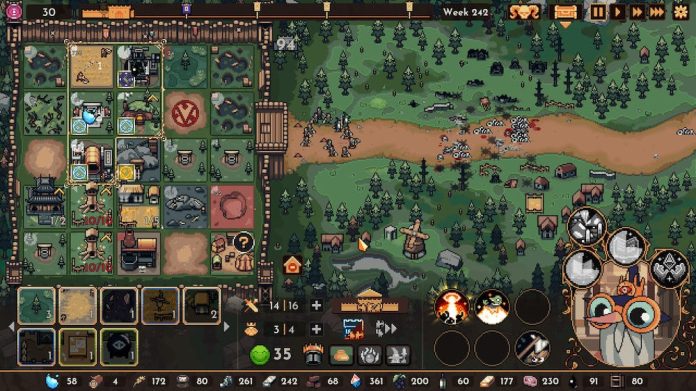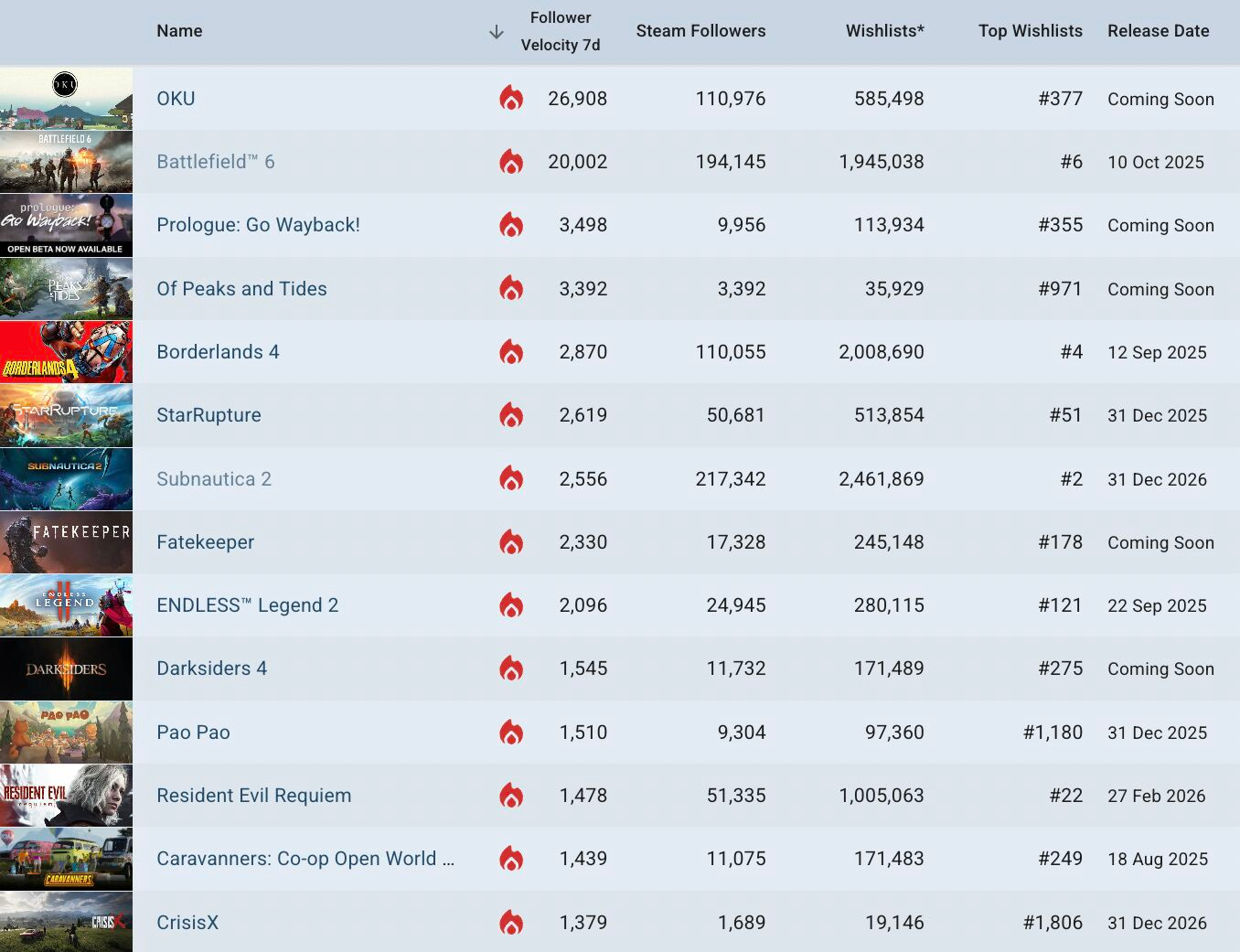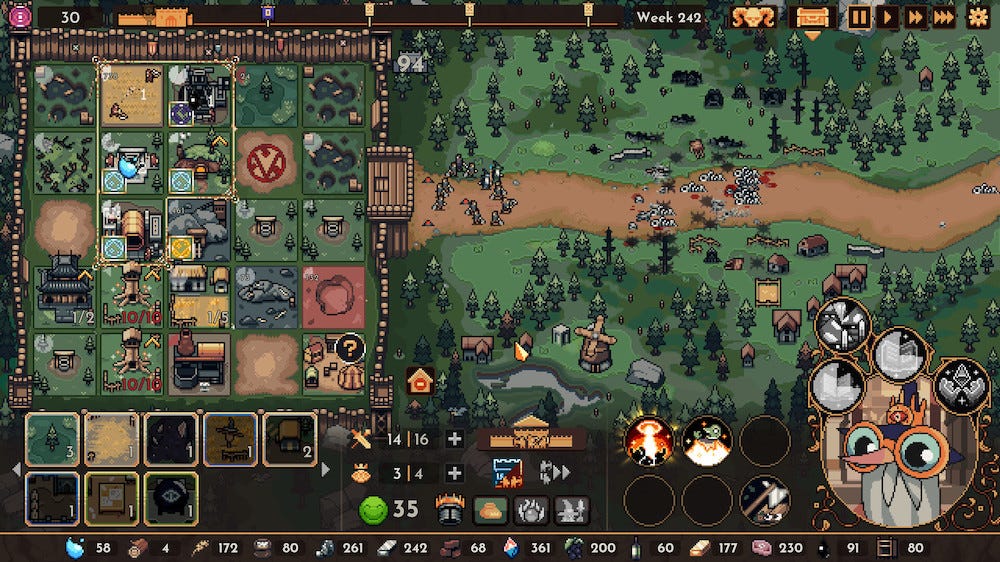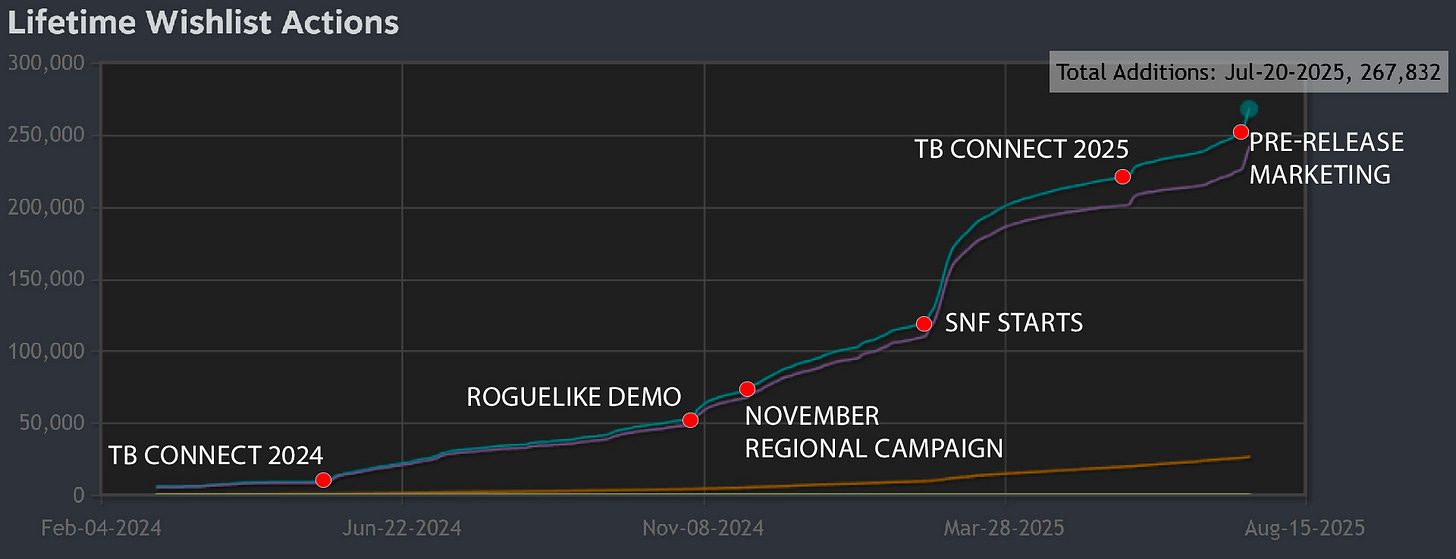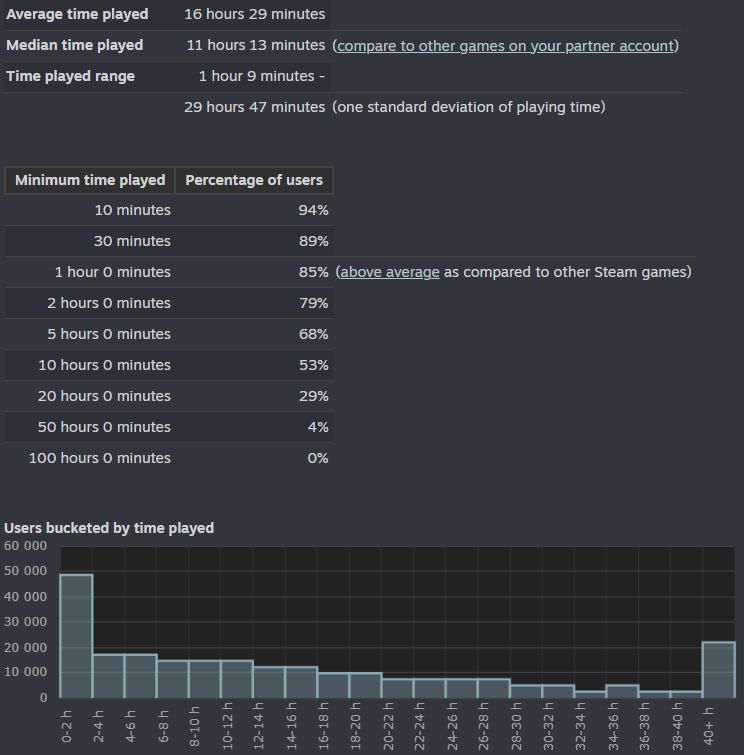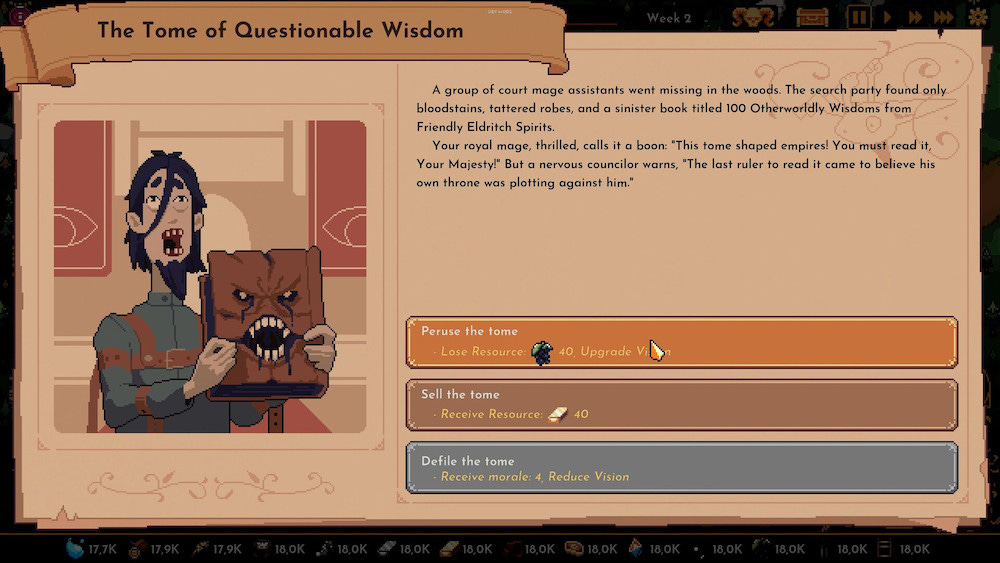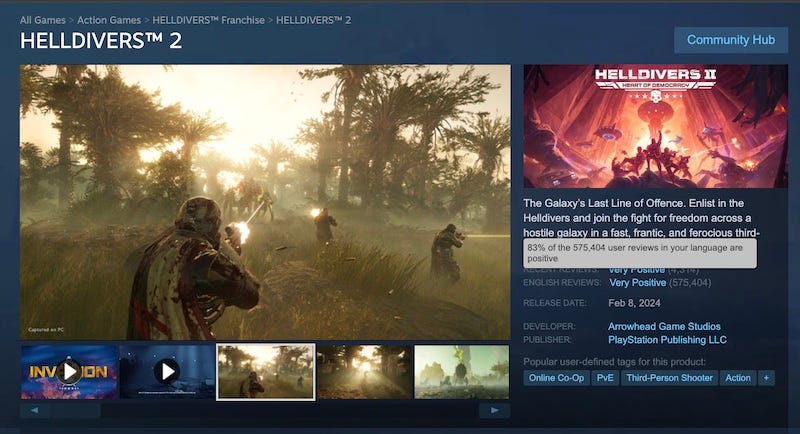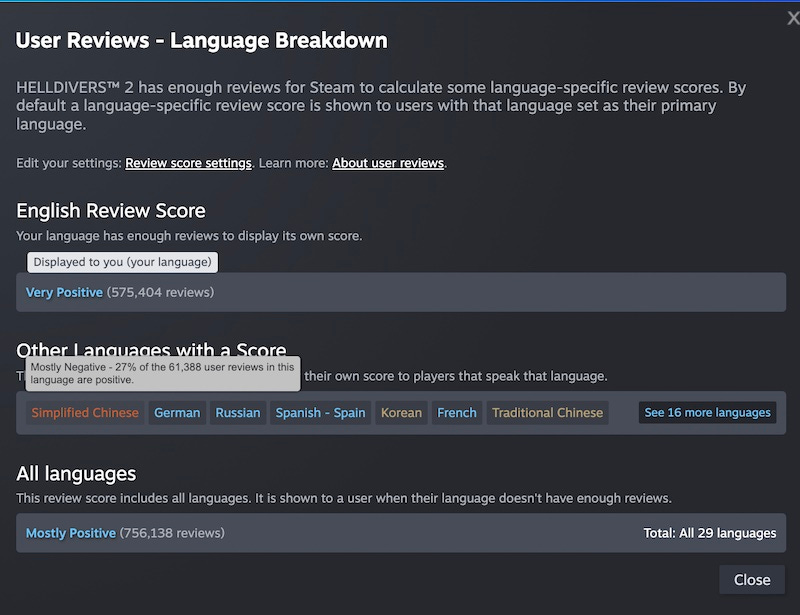[The GameDiscoverCo game discovery newsletter is written by ‘how people find your game’ expert & company founder Simon Carless, and is a regular look at how people discover and buy video games in the 2020s.]
Definitely back in the area, and happy to have our lead story today be about The King Is Watching, yet another great example of a systems-led game with sharp gameplay outselling all manner of flashier, less gameplay-first titles on Steam.
We hope you’re having fun at Gamescom, and didn’t end up attending too many AI-hallucinated meetings (woops!) Still, could be worse – at least you didn’t accidentally call your roguelike dungeon crawler ‘Crap Dungeon’ in Japan due to mistranslation woes. (If you’re reading and are the person who did – all publicity is good publicity?)
[WANT TO SUPPORT US? Signing up to GameDiscoverCo Plus gets more from our second weekly newsletter, Discord access, basic data & more. And companies, get much more ‘Steam deep dive’ & console data access org-wide via GameDiscoverCo Pro, as 70+ have.]
Looking at the top game platform and discovery news – and we’ll have lots more from Gamescom on Friday, since Opening Night Live is happening now – here’s what we see:
-
GDCo’s trending unreleased Steam games by 7-day followers, Aug 11th-18th – above – has OKU at #1 fueled by ‘incented followers’ from Bongo Cat’s multiplayer update (hmm!), followed by Battlefield 6 (#2) and first-person survival rogueliker Prologue: Go Wayback! (#3), which launched an Open Beta.
-
Also notable: lush-looking survival fantasy ARPG Of Peaks And Tides (#4), which is freshly announced. And skipping past many ‘usual suspects’ (Borderlands, Subnautica, Darksiders sequels), there’s strategy 4X Endless Legend 2 (#9) – which added a limited-time demo – and adorable ‘fluffy chef’ sim Pao Pao (#11).
-
Nvidia had a bunch of announcements at Gamescom, including higher-end Blackwell architecture coming to GeForce NOW cloud streaming, and an interesting collab with Discord to “find and try new games directly on Discord”, starting with a cloud-streaming version of Fortnite via GeForce NOW.
-
Roblox news: the state of Louisiana sued Roblox over insufficient kid protection, and the company pushed back in a public statement while (separately!) adding more kid restrictions; Twitch is adding a new system that prompts Stream Tags for specific Roblox games, helping viewer discovery of titles listed as ‘Roblox’.
-
Valve put out its latest Next Fest video Q&A, with lots of answers from Alden Kroll for the October Next Fest. He says: “I don’t think anything is significantly changing this time around”, and the ‘games shown randomly first, more targeted-ly on Wednesday’ approach is continuing. Oh, and it’s technically OK to have a demo in Next Fest & also launch during it, but Steam would recommend against it.
-
HTMAG has a data-festooned article on how Gnomes: Tower Defense grossed $370k pretty fast (~4 months), after just a 10-month dev time. Hook? “You could move towers between turns PLUS a planting mechanic”, and also it has “surly gnomes” in it, and we’re all about surly gnomes. (Also it’s good, complex, and deep, duh.)
-
The Verge has been listening to Xbox’s Jason Ronald on the Xbox’s podcast, and there were some hints on Cloud-specific sub tiers, with Ronald citing “the opportunity to make it much more affordable, and make it more accessible to players. Whether that’s going into new regions, or new ways to actually access the [Xbox] cloud.”
-
Mobile ‘games as platforms’ news: top-grossing mobile games from Monopoly Go! to Royal Match now have mini-games embedded within them, either for UA reasons, or to vary up the gameplay experience in fun, retention-centric ways? Some are pseudo-gamble-y, too, like “plinko (or pachinko-style) arcade games.”
-
Analyst firm GSD released its European game charts for H1 2025 via The Games Business. It included 19.7 million physical games sold, down 9% year on year, and unit sales down 6% overall, with Assassin’s Creed Shadows the top game. (GSD is an opt-in publisher service – so it’s strongest when totting up physical.)
-
Research news: consultants Bain have a big video game report out, noting that “nearly 1/4 of players’ other media time is gaming related” too; “the proportion of Japanese people who played videos games at least once a year in the 15-19 and 20-29 age brackets has been on a downward trend” since 2020 – still >60% in both ranges, tho.
We’ve been very impressed with Hypnohead and tinyBuild’s The King Is Watching, a $15 “roguelike kingdom builder” with lots of city building and tower defense in it, and a game that’s already sold 200,000 copies in just a couple of weeks. (We’d imagine it may eventually be a million-seller…)
tinyBuild’s Vladimir Tolmachev and Arnaud Richard were kind enough to share with GDCo how the publisher nurtured and built the project into what we’re estimating is a Top 5 new Steam game released in July (by units). So let’s get into it:
-
The King Is Watching evolved from a game jam concept: the publisher spotted the game, which was a Ludum Dare game jam entry that still has an Itch.io free version, back in March 2024. Per Vladimir: “It was planned as a deckbuilder with three puzzle-like levels… As you can see, the final release turned out quite differently.”
-
The Serbian dev team worked with the publisher on heavy iteration: after releasing an endless mode in May 2024, and announcing during Tinybuild Connect, the team realized “the game became repetitive unless you liked the idle mechanics”, and did a full post-announce reboot to a roguelike, with similar visuals.
-
As the hook took hold, the team fixed tone problems in real-time: they realized that “marketing promised a fun game, but in practice it was a very serious roguelike strategy [game]”, so “injected more humor and absurdity into the game, with meme-illustrated events, Goose Riders” and more.
While interest was rising, and the underlying idea was still intact – “manage a castle and defend it against monster invasions – with the twist that your subjects only work when you gaze upon them” – these multiple pivots landed on a game with that upfront hook, but also deep roguelike replayability. That’s the point the game’s wishlists took off:
As you can see, Hypnohead & tinyBuild had a very successful Steam Next Fest in Feb. 2025 – as we tracked at the time, The King Is Watching was #15 top demo CCU for the event, with 1,800 CCU, out of >2,300 games in the Fest. (So yes, top 1%!) The game added 60,000 wishlists, and had 11,000 DAU as an average, per tinyBuild.
It’s also worth tracking The King Is Watching’s overall playtime (below), because a median of >11 hours when a game has been on sale for less than a month is a great feat on Steam. (Never underestimate the ‘game is really good & replayable’ factor in a particular title’s success.)
As for regional split, it’s important to note that the game has 39% of its units sold in China, 16% in the U.S., and 9% in Germany – so this is a China overperformer. (GDCo has it as #30 in Chinese % ownership, from 325 Steam roguelikes with >100k sales.)
Did the tinyBuild team plan for this? tinyBuild’s Tolmachev actually wrote a whole section for us about their China approach, and we do think it helped fuel overperformance. Here’s what he said:
-
Integrated early into production: “The demo was localized into Chinese well ahead of Steam Next Fest. We progressively localized the Steam page, logo, capsule, trailers, and key news posts.”
-
Dedicated influencer push: “Around 20% of our paid media budget went to the Chinese market. We partnered with a local agency to select and manage influencer outreach.”
-
Strong local results: “Influencer 王老菊 generated over 750,000 views on Bilibili. Nearly a third of our total demo downloads came from China.”
-
Pricing adaptation: “We chose a slightly lower launch price in China even compared to what Steam suggested for regional pricing. This helped account for regional purchasing power and encouraged viral word-of-mouth in a key territory.”
We got a whole bunch more great info from Vladimir, which we think will be included in a tinyBuild blog post we’ll link later. But zoomin’ through points quickly:
-
Using the game’s demo as a ‘growth engine’ was key: the game has >500,000 demo downloads, and Vladimir noted: “The demo drove most of our early wishlist growth…. feedback from demo users shaped onboarding, UX, and gameplay clarity.”
-
Pricing was used as a bit of a weapon: Vladimir says: “We positioned the game as a €15 pixel-art indie with the polish of a €25 title. Our goal was to surprise players with how deep and cohesive it felt.”
-
Game bundle collaborations helped out too: “We collaborated early with Instinct 3 (9 Kings) and later with Hooded Horse, as well as with The Arcade Crew (Drop Duchy) and Devolver Digital (Loop Hero)” via on-Steam game bundles like this one – 20% of all purchases were made via these.
We find The King Is Watching’s success interesting because a lot of good – but not necessarily complete – ideas come from game jams. And this is an example of an initial idea with a great hook – which needed a lot of swift, iterative fleshing-out to perfect. Hurrah!
Next: in a surprise move, Steam decided to change how its reviews display, based on the language you’re viewing the PC platform in, showing ENGLISH REVIEWS in place of ALL REVIEWS, if you’re viewing the site in English. Why? Because some regions (especially China!) review differently to English – or German, etc. – language.
However, it’s solely a change for more-reviewed games, per Valve: “This change impacts games that have more than 2,000 publicly visible reviews, and with at least 200 written reviews in at least one language. We purposely made these thresholds higher than the 10 reviews required to calculate the Overall Review Score; this is because we wanted to be pretty confident in the language-specific score before showing it to users.”
Overall, we’d say the switch makes a lot of sense. We’ve previously documented some extreme differences between Chinese and English language reviews of games – for games with >1,000 reviews, you’ll see some minor and some major negative swings on the Chinese-language side of things.
An outlying example of a game affected by this change in the West is Helldivers 2 (above), which is Mostly Positive (78%) across all languages, but has Very Positive reviews in English. (However, in viewing in Chinese, reviews will now show as Mostly Negative, and just 27% positive – quite a shift…)
The only wrinkle? The fact Steam shows the # of country-specific reviews at the top of the page – but the line replaces ‘ALL REVIEWS’ in just some cases – might lead people to think games are less popular than they really are, if eyeballing review count. (And especially when browsing in less-common languages.)
For these larger games, it does say ENGLISH [or GERMAN, etc.] REVIEWS instead of ALL REVIEWS, so there’s an UI difference. But the (no doubt dev-requested!) fix is successful: if people hate you in China, and love you in the West, those audiences will now see individualized review scores, as opposed to a lumped-together composite.
And we’ve already seen multiple games tipping over to Overwhelmingly Positive in English – which is good for buzz, if not an explicit algorithm advantage. But some still disagree – Forklift’s Andrei Podoprigora says: “I think it’s influencing one of the core ways the players make decisions about buying games, and not in a good way.”
Concluding, as I just said in the GameDiscoverCo Plus/Pro Discord: “I think this all depends on ‘How much does the average Steam player care about the # of listed reviews’? If they use it to weight their decision to buy, it’s a problem. If they don’t really, then maybe not.” And that’s our 2c on the matter… toodles!
[We’re GameDiscoverCo, an analysis firm based around one simple issue: how do players find, buy and enjoy your PC or console game? We run the newsletter you’re reading, and provide real-time data services for publishers, funds, and other smart game industry folks.]
